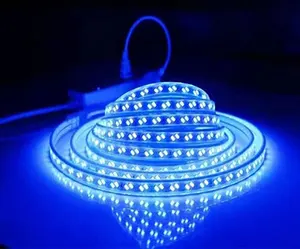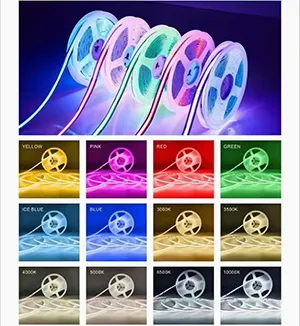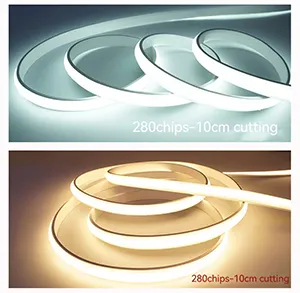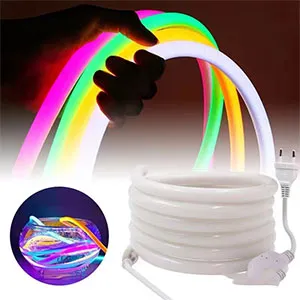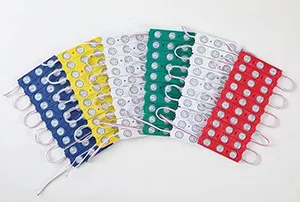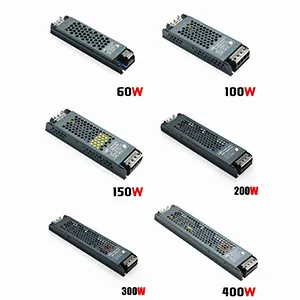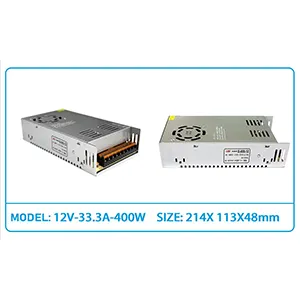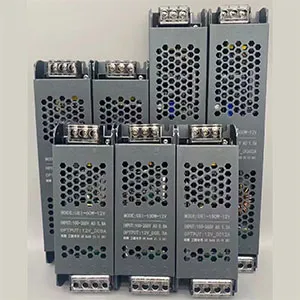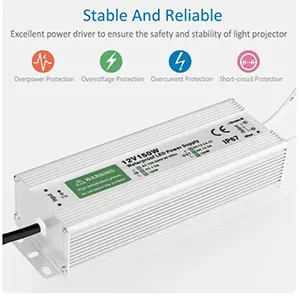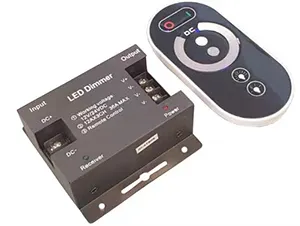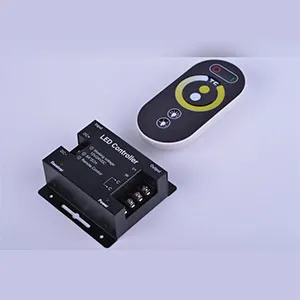Basic knowledge and installation of LED strip lights
Basic knowledge of LED strip lights
strip light is the abbreviation of LED strip light. Most people are not used to long nouns when talking about it, so they omit the LED in front and just call it strip light. This name of strip light also includes many old-fashioned strip lights that directly connect LEDs with wires without FPC or PCB, such as large second-wire, large third-wire, round second-wire, etc., and of course include flexible strip lights and hard strip lights.
The structure of LED strip light
There are two types of LED strip light structures: one is the ordinary type, which is a series and parallel circuit structure; the other is the combined type, which is the structure used in the colorful strip lights, which contains integrated circuits and timing control circuits.
The following will explain the related issues about LED strip lights with commonly used LED strip lights:
1. What materials are LED strip lights made of?
LED strip lights are composed of FPC, LED, chip resistors, waterproof silicone, connection terminals and other materials.
2. What is the circuit structure of the LED strip light?
The circuit structure of conventional LED strip lights is a series-parallel circuit. Most of the LED strip light wholesale products provided to us are 12V powered LED strip lights, which use three LEDs and a chip resistor to be connected in series to form a component circuit; Each LED strip light is composed of 10 component circuit combinations connected in parallel. The advantages of designing the circuit structure in this way are:
A. The use of resistor voltage division can effectively ensure that the LED works under the specified rated voltage, and will not shorten the service life of the LED because the input voltage exceeds the rated voltage of the LED.
B. Parallel shunting can effectively reduce the impact of the input rated current on each group of LEDs through a parallel circuit, allowing the LEDs to be stabilized within a current range, thus greatly increasing the service life of the LEDs.
C. Parallel constant voltage, because each group of LEDs is a parallel structure, so cutting off one group will not affect the normal use of other groups, which can effectively save installation costs and avoid waste.
3. What is the physical structure of LED strip lights?
LED strip lights are divided into 4 types according to width, including 6mm/8mm/10mm/12mm, and 6 types according to LED size, including 0603, 0805, 1206, 1210, 5050, and 5060. So what is the physical structure of each LED strip light? We also provide conventional LED strip lights (led5050220v flexible strip light) as an example to illustrate their physical structure.
Since LED strip lights need to be divided according to the specific length of the strip light, the number of LEDs and the cutting position, no matter what kind of LED strip light, the arrangement of its physical structure is calculated according to the following formula:
(LED strip light length - cutting position width x number of cuts)/number of LEDs = LED spacing.
Number of LEDs/3=number of chip resistors
Characteristics of LED strip lights
1. Soft and can be curled at will.
2. Can be cut and extended.
3. The light bulb and passage are completely covered in flexible plastic, with good insulation and waterproof properties, and are safe to use.
4. Strong weather resistance.
5. Not easy to break and have long service life.
6. Easy to create graphics, text and other shapes; it has been widely used in buildings, bridges, roads, gardens, courtyards, floors, ceilings, furniture, buses, lakes, underwater, posters, pink signs, signs, etc. Whitewash and illuminate.
How LED strip lights work
Each segment is a unit, and each unit has a fixed number of light-emitting diodes and distributed current-limiting resistors. When cutting, it must be cut off by unit, otherwise this segment will not light up. Each unit is connected in parallel to withstand the power supply voltage, including DC 200V, 24V, 12V, 5V, etc. The power supply and the strip light are connected with positive and negative poles. Reverse connection and light up.
How to install LED strip lights
1. Indoor installation: When LED strip lights are used for indoor decoration, they do not have to withstand wind and rain, so the installation is very simple. Take the LED strip lights produced by Guanghong Electronics as an example. Each LED strip light has self-adhesive 3M double-sided tape on the back. During installation, you can directly peel off the sticker on the surface of the 3M double-sided tape, and then fix the strip light where needed. Where to install, just press it flat with your hands. What should I do if some places need to be turned around or are too long? It's very simple. The LED strip light is a circuit structure composed of a group of 3 LEDs connected in series and parallel. Every 3 LEDs can be cut off and used individually.
2. Outdoor installation: Outdoor installation will be exposed to wind and rain. If 3M glue is used to fix it, the 3M adhesive will decrease over time and cause the LED strip light to fall off. Therefore, outdoor installation often uses card slots to fix it. Where cutting and connection are required, the method is the same as for indoor installation, except that additional waterproof glue is required to consolidate the waterproof effect of the connection points.
3. Power supply connection method: The general voltage of LED strip lights is DC 12V, so a switching power supply is required. The size of the power supply is determined according to the power and connection length of the LED strip lights. If you do not want each LED strip light to be controlled by a power supply, you can purchase a relatively high-power switching power supply as the main power supply, and then connect all the input power supplies of all LED strip lights in parallel (if the wire size is not enough, you can extend it separately). All are powered by the main switching power supply. The advantage of this is that it can be controlled centrally. The inconvenience is that it cannot realize the lighting effect and switch control of a single LED strip light. The specific method can be measured by yourself.
4. Controller connection method: LED marquee strips and RGB full-color strip lights require a controller to achieve changing effects, and the control distance of each controller is different. Generally speaking, the control distance of a simple controller is 10 to 15 meters, the control distance of the remote controller is 15 to 20 meters, and the longest distance can be controlled to 30 meters. If the connection distance of the LED strip light is long and the controller cannot control such a long strip light, then a power amplifier is needed for tapping.
5. Pay attention to the connection distance of LED strip lights: Generally speaking, the longest connection distance of 3528 series LED strip lights is 20 meters, and the longest connection distance of 5050 series LED strip lights is 15 meters. If this connection distance is exceeded, the LED strip light will easily generate heat, which will affect the service life of the LED strip light during use. Therefore, installation must be carried out in accordance with the manufacturer's requirements during installation, and LED strip lights must not be overloaded.
Things to note when installing LED strip lights
1. Do not turn on the power to light up the LED strip lights when the entire roll of LED strip lights has not been removed from the packaging or piled up;
2. When the LED strip light needs to be cut according to the length of the on-site installation, the strip light can only be cut at the place marked with scissors, otherwise one of the units will not light up. Generally, the length of each unit is 1.5-2 meters;
3. When connecting the power supply or connecting two strip lights in series, first bend the head of the Licai lamp to the left and right to expose about 2-3mm of the wires in the strip light. Use scissors to cut it clean without leaving burrs, and then use a male needle to connection to avoid short circuit;
4. Only LED colorful strip lights with the same specifications and the same voltage can be connected in series, and the total length of the series connection cannot exceed the maximum allowable length;
5. When LED strip lights are connected in series, try to light one section after each connection, so as to promptly find out whether the positive and negative poles are connected incorrectly and whether the light emission direction of each section of strip lights is consistent;
6. The end of the strip light must be put on a PVC tail plug, tighten it with a clamp tape, and then use neutral glass glue to seal around the interface to ensure safety.
7. Because LED has unidirectional conductivity, if you use a power cord with an AC-DC converter, you should first conduct a power test after completing the power connection to make sure that the positive and negative poles are connected correctly before putting it into use.







